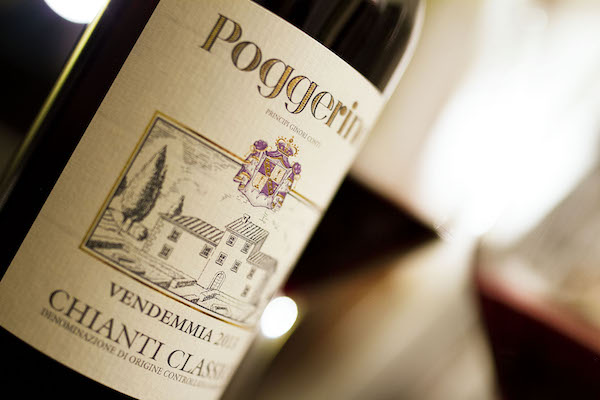
We have just spent a week careering around the Tuscan countryside like crazed cinghiale, sniffing out truffle and guzzling Chianti Classico. Everywhere we went, friendly black roosters tempted us in like slightly tipsy Sirens.
The problem is, all roosters are not created equal. That’s unsurprising given that Chianti Classico’s rippling landscape covers nearly 72,000 hectares. There are few single appellations that span so many different aspects, altitudes and geologies. Small wonder there is a growing clamour within the world of wine for the Chianti Classico ‘Consorzio’ to introduce a system of ‘comuni’ or subzones.
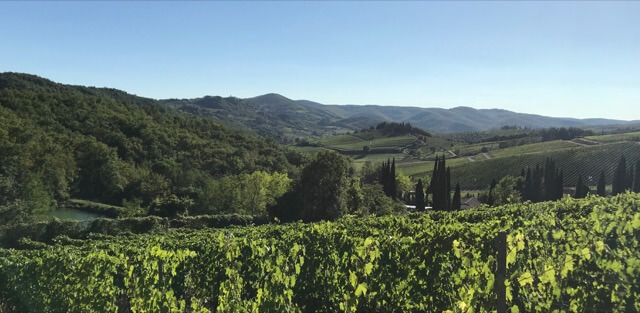
Fattoria Poggerino looking towards Radda-in-Chianti
Pick of the brood
With all this variety, how on earth are consumers meant to select a prize rooster? Well, we’ve done the hard work for you. Look no further than Fattoria Poggerino, a small Radda estate that’s making some of the best wines Chianti Classico has to offer. We visited last week and it reminded us exactly why L&S staff almost unanimously chose these wines for their weekend treat.
Poggerino’s 12 hectares of vines are ideally situated – laid out like an open book across a single, south-east facing slope running up to 500 metres. A hillptop forest breathes cooling oxygen onto the vines at night.
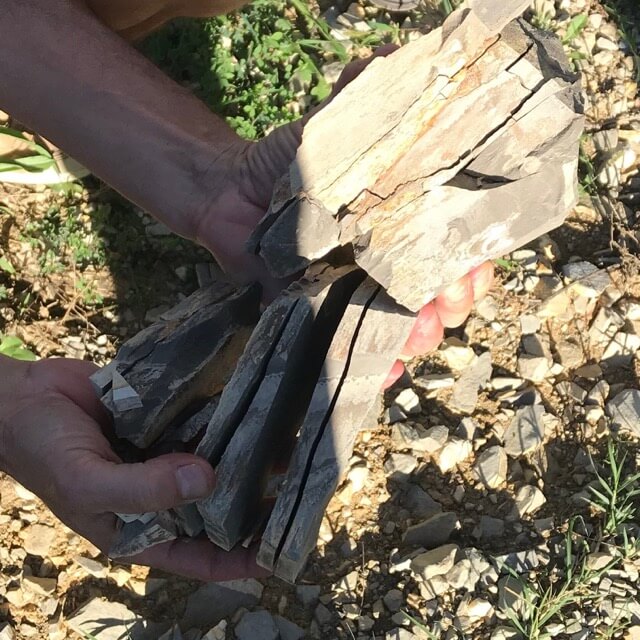
Poggerino’s ‘Galestro’ soils
The soil here is clay and ‘galestro’ – a compact calcerous schist (see picture). The schist helps provide good drainage and lends the wines energy and mineral inflection. The bedrock is so dense that new plantings require the services of a special industrial digger drinking more than twenty litres of fuel an hour!
It’s in the breeding
Poggerino is owned and run by Piero Lanza – oenologist, agronomist and brilliant winemaker. Piero is the third generation of his family to manage the estate and he knows it back to front. Since 1988, he has been tinkering with the plantings, ensuring that the 20 different Sangiovese clones (see picture) he grows are perfectly matched to the terroir. Each clone is carefully chosen and blended to enhance nuances of aroma, colour or phenolic character in the finished wine.
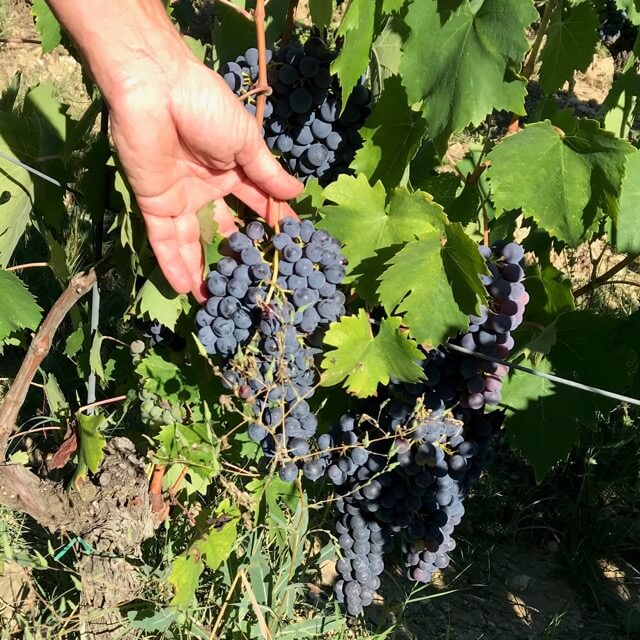
Sangiovese ‘Grosso’, ,one of 20 clones grown at Poggerino.
Piero farms organically and prefers a ‘natural approach’ in the vineyard. He pays particular attention to the canopy, which he calls ‘the engine room of the vine.’ It’s why he prefers to roll excess leaf growth back into the canopy rather than give the plant a military grade haircut. The latter encourages too much growth on the lower shoots, increasing humidity and disease potential on the bunches.
You can see this attention to detail in the cover cropping too. Piero uses two different grasses along a single row of vines because the topsoil is slightly thicker at the bottom of the slope. It’s all about introducing a Goldilocks level of competition for resources at exactly the right moment in the cycle.
The Poggerino harvest is meticulously managed by clone type and vine age. The best bunches on the oldest vines are earmarked for the Riserva. This fruit is left slightly longer on the vine to soak up all the remaining energy and intensity of the growing season.
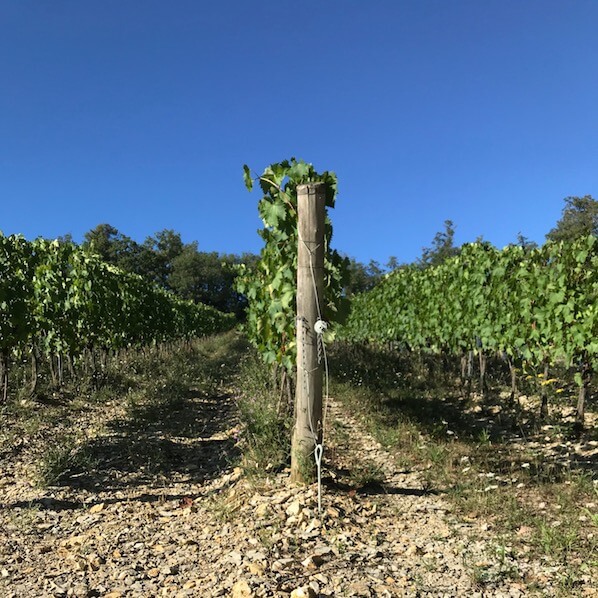
Cover Cropping
As we approach the 2018 harvest, everything is perfectly poised in the vineyard. As you can see from the photos, the canopy is gloriously green, the berries are full but healthy, and the August rains mean there is no chance of hydric stress. All Piero needs is a few weeks of sunshine to finish off the ripening process.
Then it will be into the winery, new since 2016, where Piero shows further mastery. The fermentation of his Riserva is in unlined concrete tanks as he prefers a small amount of gentle oxygen-contact during the long maceration.
Piero has even invested in a special concrete egg for his ‘N(Uovo)’ bottling – the shape creates a natural convection system, keeping the fine sediments constantly in suspension. It’s a technique Piero is convinced adds depth and complexity to the wine.
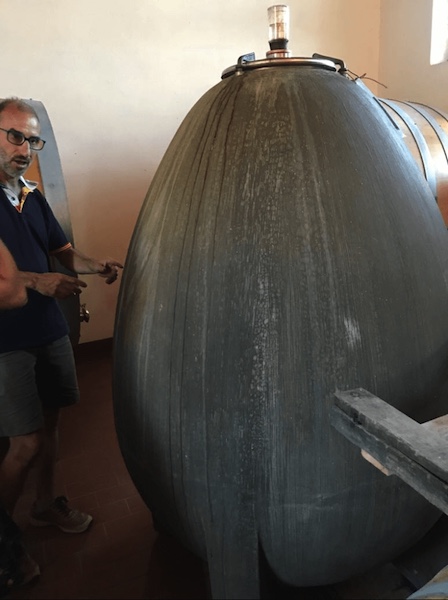
The Ceramic Egg
Élevage at Poggerino is conducted in a judicious mixture of barrique and tonneau, with the Riserva matured solely in larger Slavonian oak. Piero prefers this more restrained approach and has been gradually reducing the influence of wood in his wines in order to accentuate the innate qualities of his exceptional terroir.
Vintages to crow about!
We are blessed with some fantastic vintages of Poggerino at the moment. 2015 is a blockbuster giving warm, generous, critic-pleasing wines that are already showing so well. Piero even refers to his 2015 Chianti Classico as his ‘business card’ and why not?! You’d struggle to find a worthier hallmark. His 2015 Riserva is still young but the potential is obviously enormous. It was just awarded 96/100 by the Wine Spectator and we have it on good authority it may be making an appearance at a Jancis Robinson event in the not too distant future…
The 2016s may be less immediately appealing but they show brighter acidity and what Peiro enthusiastically describes as greater ‘verticality’. It’s certainly his pick of the two vintages. During our visit, we tasted the 2016 Labirinto which was so bright and energetic the fruit seemed to glisten. Our tasting was the first time Piero had sampled the 2016 ‘Nuovo’ but he seemed very pleased with its first showing. We were very impressed too. It has a lovely velvety texture and remarkable length. When this appears in the shops, it’s another one to keep your eye on.
Thank you for a wonderful visit Piero, we are all praying for some more sunshine!
